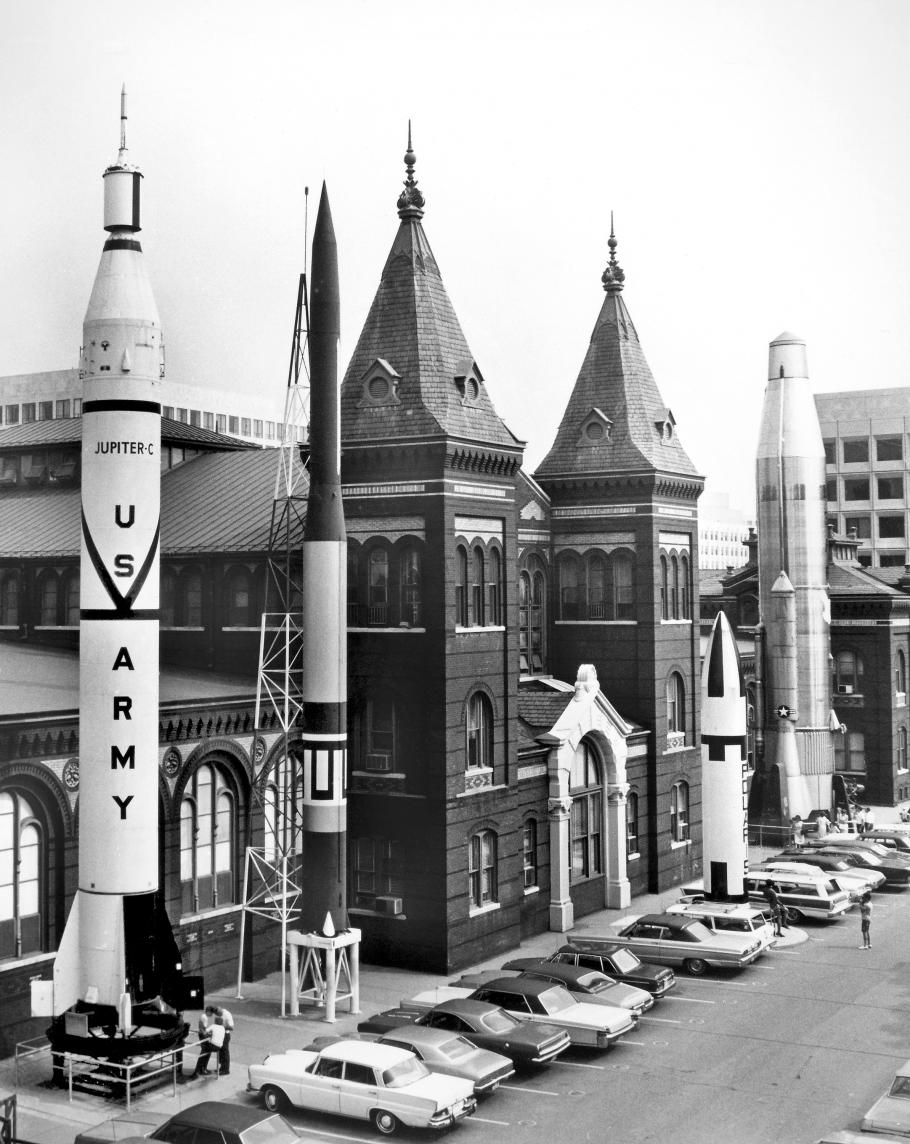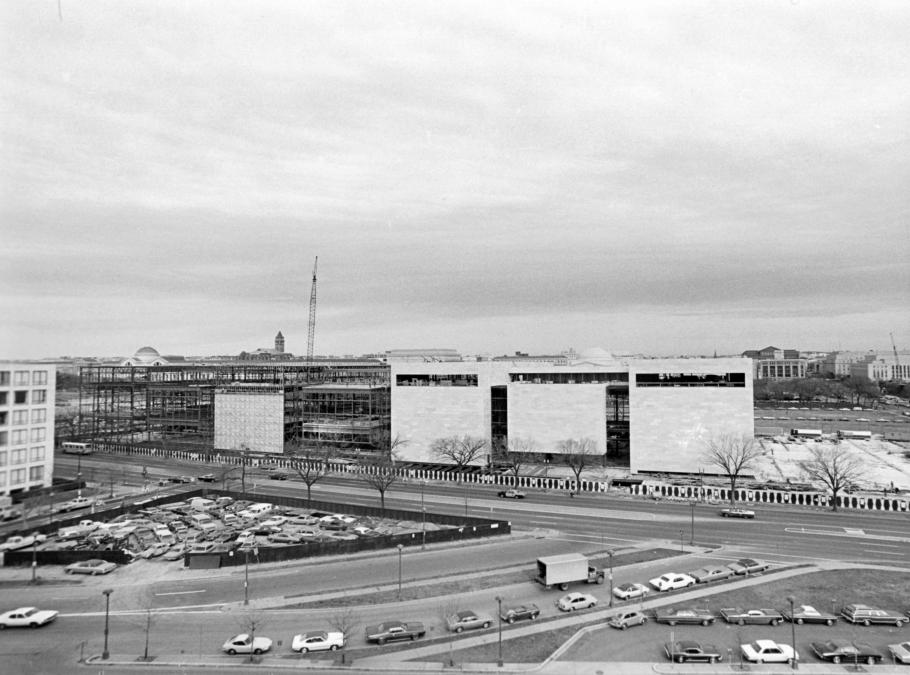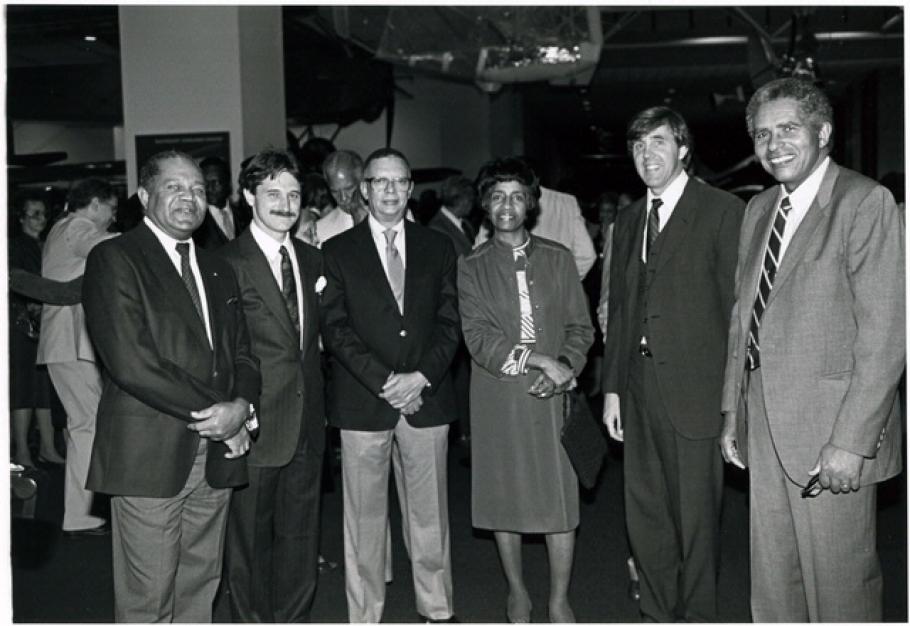When I began to work at the National Air and Space Museum in March 1975, I was the Museum’s sole reference librarian, having graduated from Catholic University of America with an M.S. in Library Science the previous year. I had only been working for a few weeks, when I was told that we’d be moving from our Arts and Industries Building location to a brand new facility down the street. My boss, a professional of some standing in the librarian community, knew her job well, but she didn’t know much about moving a library, so it was up to me and one of my stalwart colleagues, a guy named Bill Jackson, whom some old-timers will remember fondly, to figure out how to box everything up and move it less than a city block away.
We wouldn’t open the new Museum to the public until the next year—July 1976, but the goal was to get everything into the newly-constructed building by end of summer 1975 so we could be fully operational for the official opening. That meant a lot of preparation—trying to figure out, in our case, how to pack books and other library materials, and label the containers so that we knew what we had at the other end. Another consideration was conservation. We were told that we had to attend a briefing given by Dr. Robert M. Organ, chief of the Conservation Analytical Laboratory, a predecessor of what is now the Museum Conservation Institute. I don’t remember much about the lecture, except the upshot, which was that we were to place in every box that was to be moved, a square of cotton gauze into which would be put a scoop of moth crystals (I’m not sure exactly how much); the gauze would then be tied with string. (It looked like a bizarre moth crystal wedding favor.) The moth crystals would prevent any live insects from being transported in the boxes that traveled from one place to the other. So before anything could actually be moved we had to prepare what seem liked hundreds—maybe even thousands—of these little containers of moth crystals. The day was set in May 1975 for the production of the moth crystal packets. We had everybody involved, staff, interns, and whomever else we could corral into doing the odious—and odoriferous—task. We formed an assembly line; some people cut the gauze, some people put the crystals into the gauze squares, and some people collected the packets and placed them into large cardboard containers. The Arts and Industries Building wasn’t air conditioned, so we opened all the doors and windows and turned on two giant fans, but to no avail. The smell of moth crystals hung heavily in the air for what seemed like forever. It took us a couple of weeks, but we produced what we thought were enough of the packets so that one could be placed in every box to be moved. (Some of this process was done in a less-than-scientific way, so we may have missed some boxes.) We went home every evening reeking of moth crystals and were unable to get that smell out of our nostrils. I began to wonder why in the world I ever took the job. An evening in July was chosen for the move. The movers were mostly college students hired by a local moving company who had little or no idea of what they were doing. We spent an entire summer’s night loading the boxes into the moving van, removing them at the other end, and hauling them up to the space in the west end of the building where the library would be. Around 10:00 pm, the moving boys decided they needed a beer break and dispersed to who knows where. At 10:30 or so, some of them hadn’t returned, but we couldn’t wait. We just went on without them. Somehow we managed to get everything transferred. By the time we opened the last of the boxes, sometime at the end of summer, we discovered that the moth crystals had evaporated!
By October the library was up and running, and even though the Museum was still under construction and you couldn’t go anywhere outside the third floor without a hard hat, we were answering mail and telephone calls—no visitors yet, of course. The day of the opening came on July 1, 1976, and we had no idea of the horde of visitors who wanted to use the library (no appointments were necessary in those days). We were literally overrun, but it was a good feeling because after so much work, the place was a success. To this day, I can’t go near a moth crystal without thinking of my earliest days at the National Air and Space Museum.



